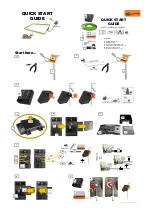
7-1
EB 01b_EN
February 2022 edition
Subject to technical changes
Operation
7 Operation
As soon as the commissioning/recommissioning work is
complete, see Chapter “6 Commissioning”, the valve is ready for
operation.
Danger of burning due to hot or cold components and pipe!
Valve components and pipes can become very hot or very cold
during operation and cause burns upon contact.
Ö
Let the components and pipes cool down or warm up.
Ö
Wear protective garments and protective gloves.
Danger of injury due to pressurised components and escaping
medium!
Ö
Do not loosen the test connection while the valve is
pressurised.
Danger of crushing due to moving actuator stem and stem!
Ö
Do not reach into the yoke as long as the pneumatic power is
connected to the actuator.
Ö
Before working on the valve, interrupt and lock pneumatic
energy and the control signal.
Ö
Do not allow the jamming of objects in the yoke to hinder the
operation of the stem and actuator stem.
Ö
If the actuator stem and stem are blocked (e.g. due to
“seizure” if not actuated for a long period of time”), release
the residual energy of the actuator (spring tension) before
releasing the blockage, see the corresponding actuator
documentation.
Danger of injury due to escaping exhaust air!
During operation, when regulating or when opening and closing
the valve, exhaust air can escape, for example from the actuator.
Ö
Wear eye protection when working near the valve.
Observe the following points during operation:
Ö
The PFA plastic sealing surfaces tend to
fl
ow. After commis-
sioning and reaching the operating temperature, tighten all
fl
ange connections between the pipe and valve with the cor-
responding tightening torques, see Table 15-3 or Table 15-4
in Chapter “15.1.1 Tightening torque”.
Ö
If required, retighten the screw connection of the body parts,
see Table 15-1 or Table 15-2 in Chapter “15.1.1 Tightening
torques”.
Ö
The valve/actuator unit must be actuated with the control
signals.
−
Valves that were delivered from the factory with an actuator
are precisely adjusted. The user is responsible for any
changes they make.
−
For the manual operation or manual override of the actuator
(if present), normal manual forces are suf
fi
cient and the use
of extensions to increase the actuation torque is not permit-
ted.
−
Valves with a bellows generally have a test connection
(e.g. ¼“) between the bellows and the outer stem sealing.
This makes it possible to check if the bellows is not damaged.
WARNING
−
Upon customer request, these valves can also be equipped
without a test connection.
Ö
If a valve leaks, observe chapter “8 Faults”.
Summary of Contents for EB 01b
Page 28: ...5 6 EB 01b_EN February 2022 edition Subject to technical changes Installation...
Page 30: ...6 2 EB 01b_EN February 2022 edition Subject to technical changes Start up...
Page 32: ...7 2 EB 01b_EN February 2022 edition Subject to technical changes Operation...
Page 36: ...8 4 EB 01b_EN February 2022 edition Subject to technical changes Malfunction...
Page 40: ...10 2 EB 01b_EN February 2022 edition Subject to technical changes Decommissioning...
Page 42: ...11 2 EB 01b_EN February 2022 edition Subject to technical changes Removal...
Page 48: ...13 2 EB 01b_EN February 2022 edition Subject to technical changes Disposal...
Page 50: ...14 2 EB 01b_EN February 2022 edition Subject to technical changes Certificates...
Page 51: ...14 3 EB 01b_EN February 2022 edition Subject to technical changes Certificates...
Page 52: ...14 4 EB 01b_EN February 2022 edition Subject to technical changes Certificates...
Page 53: ...14 5 EB 01b_EN February 2022 edition Subject to technical changes Certificates...
Page 54: ...14 6 EB 01b_EN February 2022 edition Subject to technical changes Certificates...
Page 61: ...EB 01b_EN February 2022 edition Subject to technical changes...
Page 62: ...EB 01b_EN February 2022 edition Subject to technical changes...
Page 63: ...EB 01b_EN February 2022 edition Subject to technical changes...
















































